The Real Time Strategy Dashboard

Published 2023-02-01
Summary - You cannot manage today’s business with metrics and dashboards that date back to the 1960’s, yet over 90% of business are trying to do so. Why do you need new metrics and dashboards?
Executive Summary
You cannot manage today’s business with metrics and dashboards that date back to the 1960’s, yet over 90% of business are trying to do so. Why do you need new metrics and dashboards? Four key reasons:
- The pace of business is much faster than even a decade ago,
- Accurate daily / weekly data is now available
- What drives success is different than it was – we are now worried about new issues like Risk, Traction, Velocity, Viability, and Vitality
- Strategy is now everyone’s everyday job – we can no longer wait for the command-and-control hierarchy to react to business issues
So where does that leave us? Looking for real-time feedback. Performance needs to be put into strategic context. We need to make this available and understandable as your car’s dashboard. Hence the Real Time Strategy Dashboard, or RTS Dashboard.
More about the need for a RTS Dashboard
Measure more.
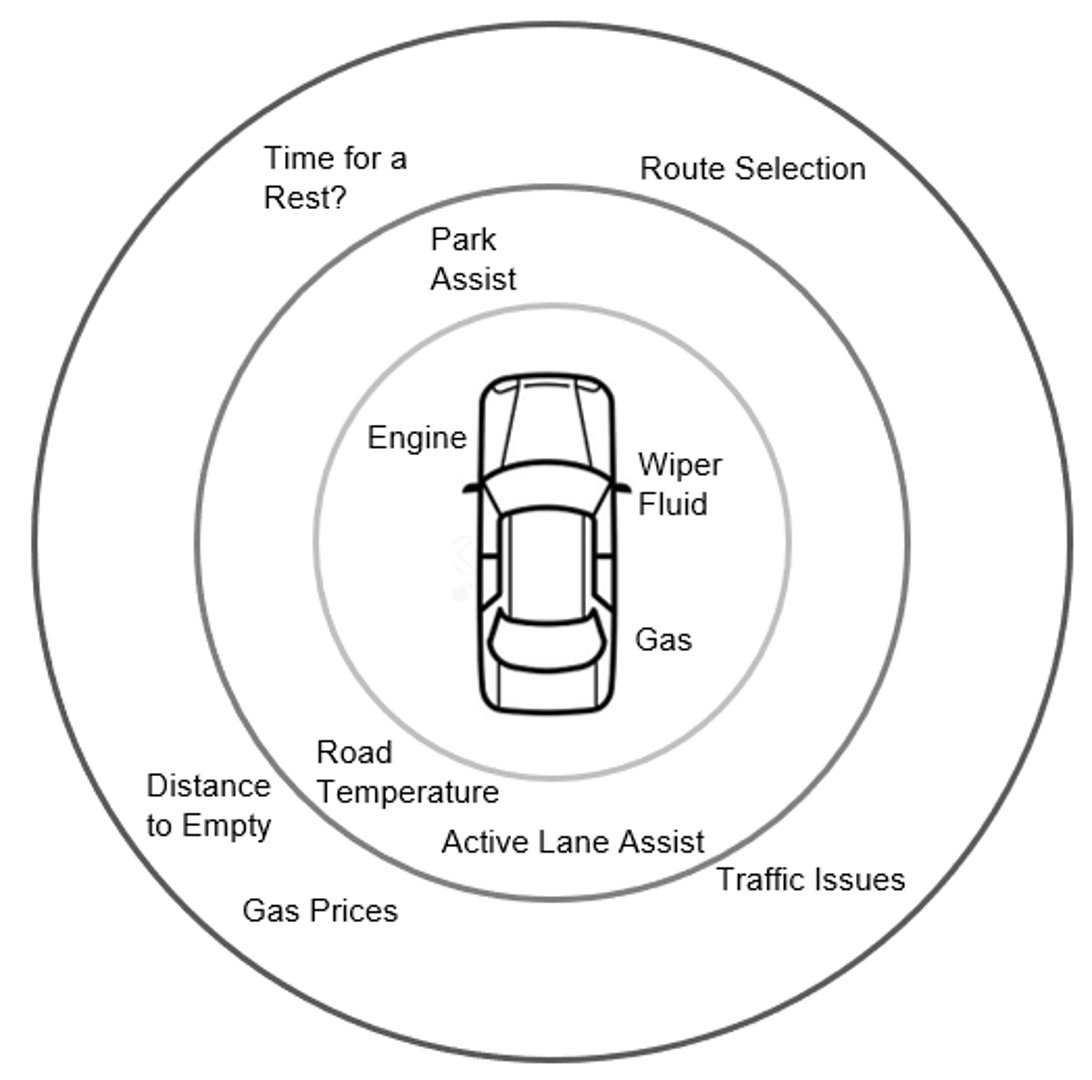
Today’s cars have about 22% more power from engines that are less than half the size of engines for the 1960’s. Why? Because the processes are better designed. There are multiple computers (or brains) managing sub-systems (fuel, combustion, etc.). The raw materials they use are better… and society demands better efficiency, etc.
The dashboards we use to manage a car are also significantly different. Back in the 60’s all we saw on our car dashboard was information about the internal workings of the car – gas, speed, engine oil, engine temperature, voltage, etc. You needed to be a process expert (mechanic) to understand it!
Now our car dashboards are significantly different – they simplify the information so that anyone can understand it, such as the “check engine” light, as opposed to oil, temperature, voltage, etc. It gives you all sorts of information from beyond the car – road conditions, alternative routes, traffic, etc. so that you can be far more effective in your car trip.
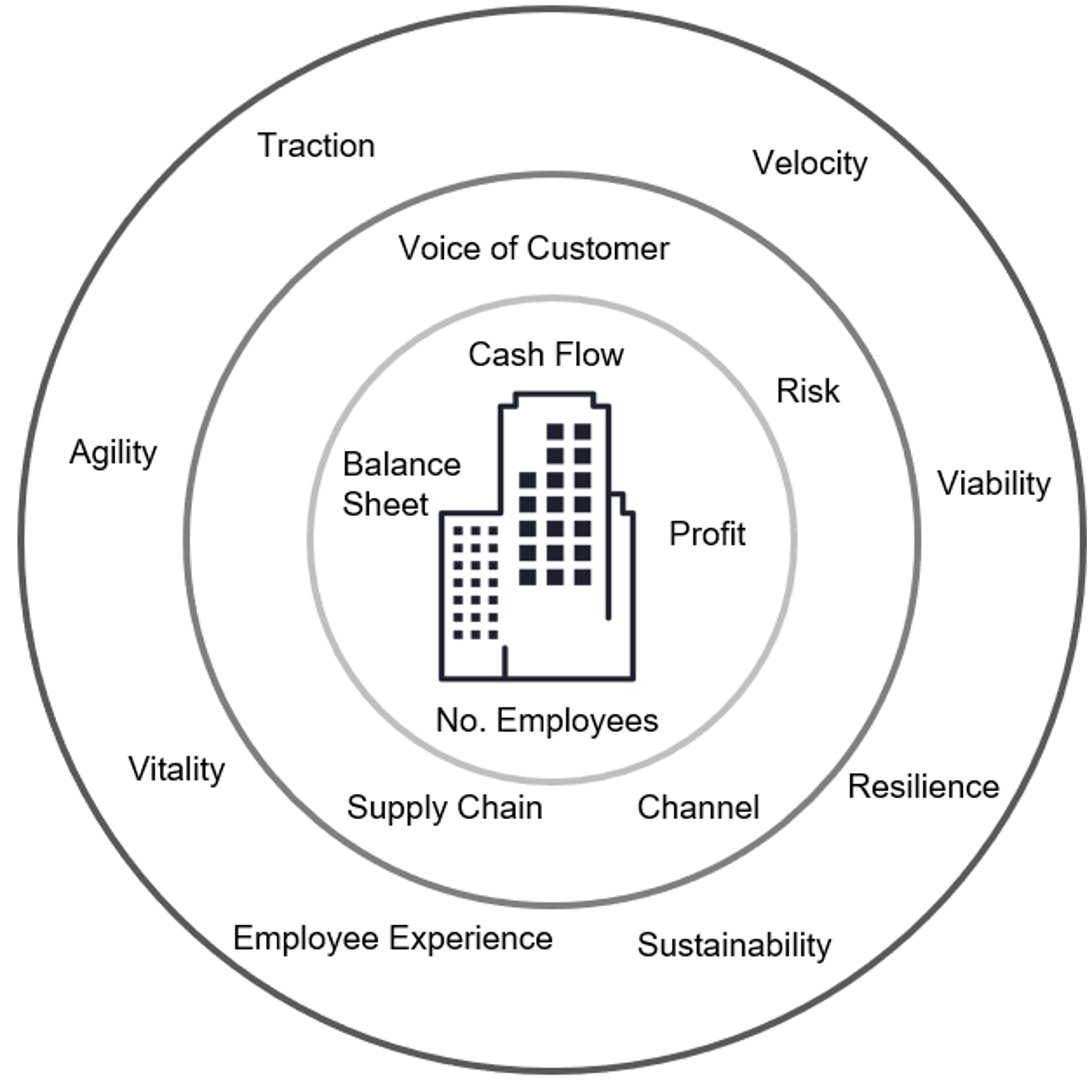
Our businesses are the same – the old, traditional measures look only at the internal operations of the business and you need to be a process expert to understand them. Looking back at business in the 60s, everything was done on paper and flip charts. We’ve since moved our work to computers, yet still use the exact same formats to present – spreadsheets and slide decks – meaning we still need those process experts to get information.
Management now requires the same upgrade that has been given to our vehicles. Businesses are exponentially more complicated than they used to be. There are CRM tools, HRIS tools, Project Management tools, and many more. We have the 22% more power, but we do not have the smaller engine. There are countless decisions being made based on these tools operating in isolation, but organizations need these decentralized decisions to be aggregated into one single view of the truth.
To move forwards, there is a need for new measures beyond the organization – like our traffic, weather, and road conditions. It is not only business that is changing, but society. Through social media, online voice has significant influence, and the perception of your organization must be monitored to ensure success. That same online voice can be harnessed to promote your products or analyzed to figure out what the next big thing could be. Relationships with your community can also have an impact on the perception of your organization – whether you are one willing to help and volunteer, or not so much. Examples extend well beyond social media – point of sale activity, number of cars at any point in time, etc., etc.
Measure faster.
Everything about business is moving faster than a decade ago – changing products, consumer demands, technology, markets, exchange rates… Your business needs to change faster than change itself. Agile businesses are a necessity – and if you are not agile, your competition will be beating you at an ever-increasing rate.
The need for speed
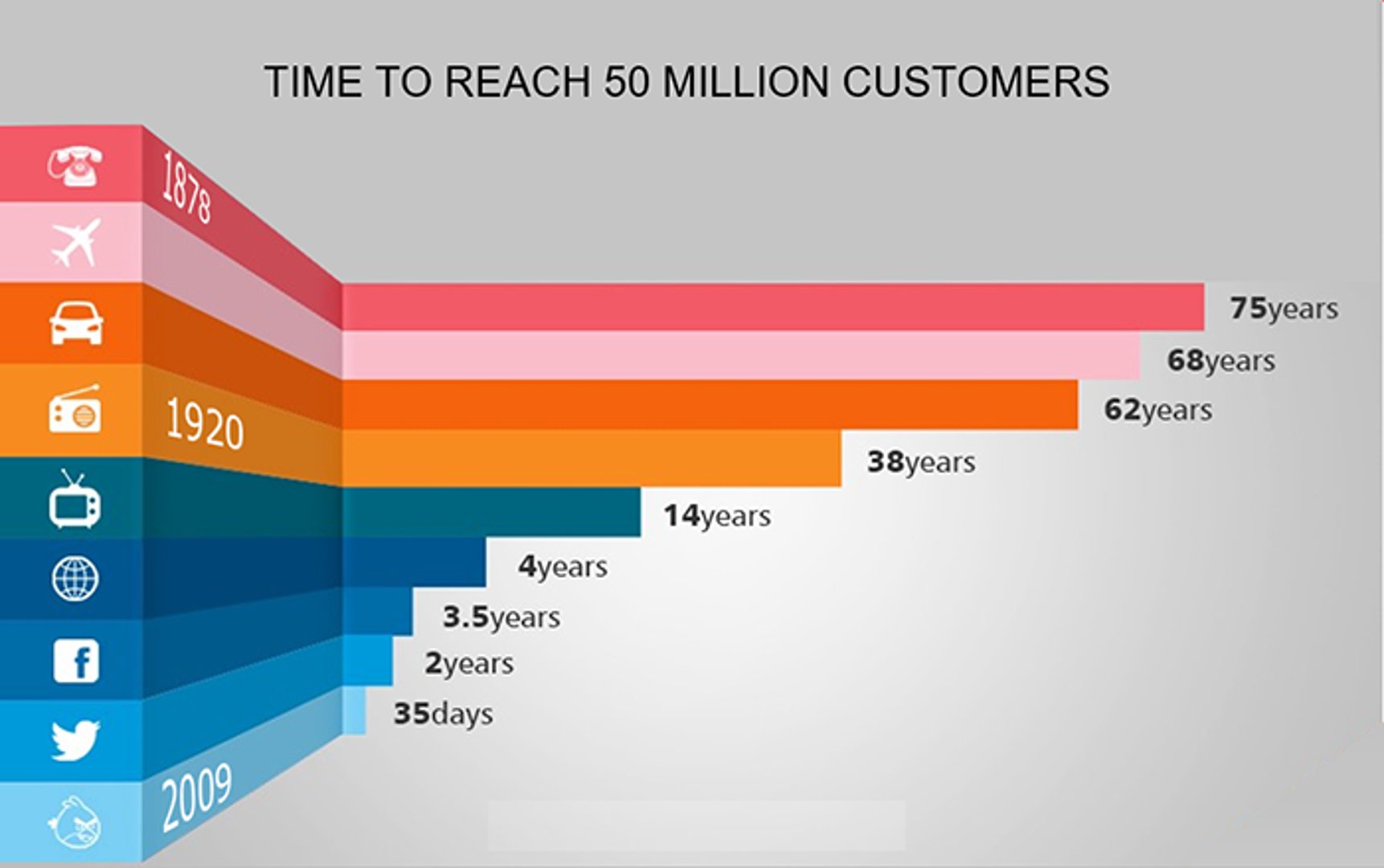
We have all seen charts like this – describing the ever-increasing speed of business and new product introductions. But, look at it this way…

By the way – that ten-minute outage in the Angry Bird’s sales process would equal about 10% of Radio’s ANNUAL sales in 1925!
Now consider this: Your current reporting framework was designed in the telephone and radio era around the turn of the last century! It does NOT have the near-real-time data you need to manage businesses in 2018!
Look at measures through a strategic filter
A dollar sale gained in your strategically critical market is worth far more to you than a dollar sale in your traditional market.
Strategy is everyone's everyday job

So imagine your company has two products. One that is a market leader – it has owned that market for the last 20 years. You charge a premium for that product. It is easy to sell… every customer that walks into your store knows everything about that product… in fact they are loyal fans with higher customer satisfaction scores than any competitor.
But Corporate has launched a new product. It is un-tested. It appeals to a completely different market. The company has never had a product in that sector. It does stuff that no one has seen before.
Which product are you going to sell? Obviously, the Established Product. Every sale is easy. No competition.

The new product would require you to lose all sorts of time in training. Sales will be slow to begin with – and maybe forever! You may not even earn enough to pay the bills.
The established product wins every time (Read Clay Christensen’s “The Innovators Dilemma”)
The Company’s problem is this: they are pretty darn sure that this new product is going to take off – it may even be bigger than the Established Product.
The organization has to cascade that strategy down to the Team and individual level. The Company needs to provide a dashboard – down to the individual sales-person level, that is clear about performance and rewards for selling the New Product. That dashboard could even show how one earns more “strategy points” for all the things leading to New Product sales – such as the training.
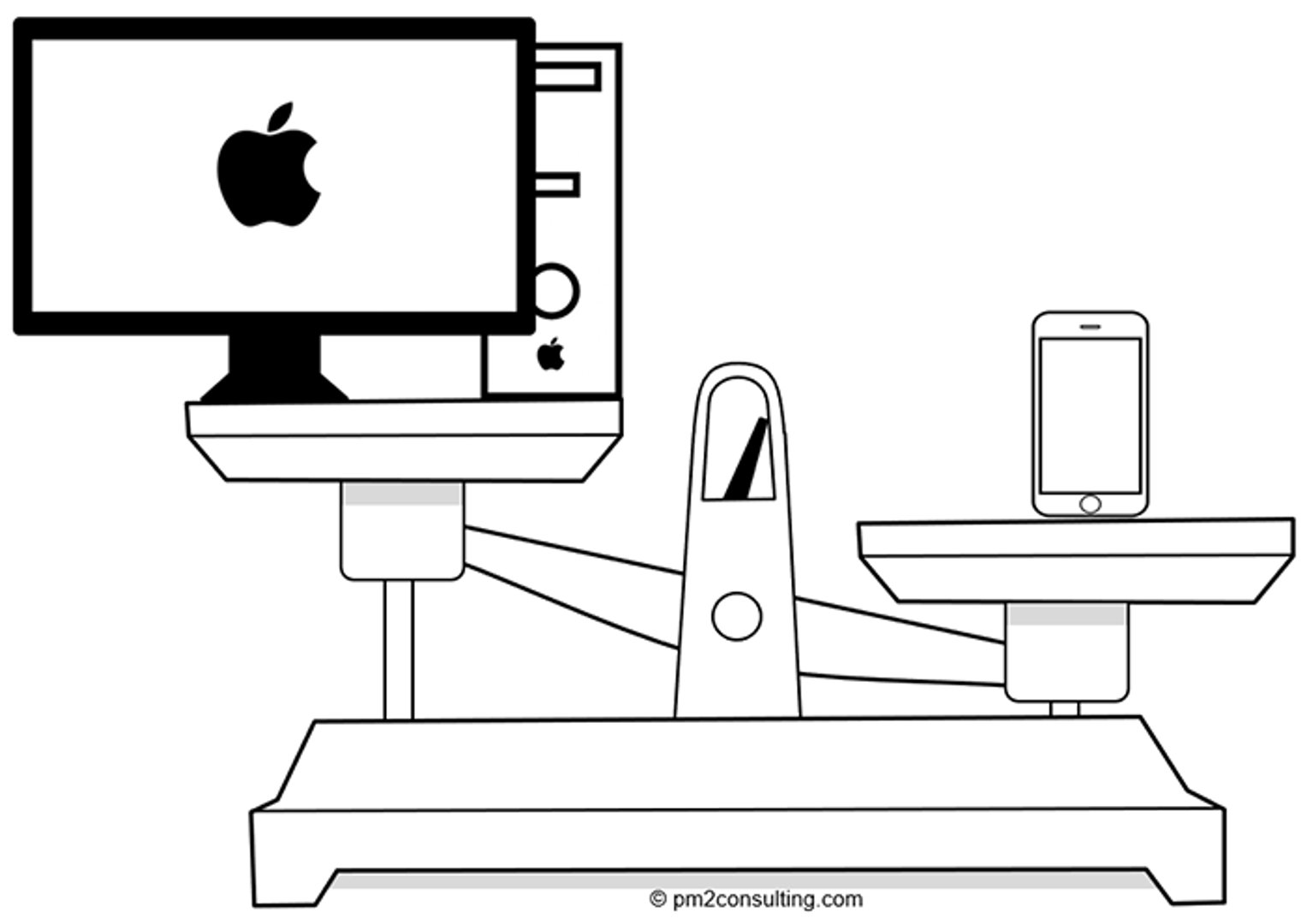
The ability to get this message across and down the entire organization proved to be invaluable to Apple. The iPhone had all those characteristics – New market, un-tested product, different customers, different technology… It had everything going against it and could have failed if every employee had not kept the Apple strategy in-mind as they went about their jobs.
Looking out the windshield, not the rear-view mirror
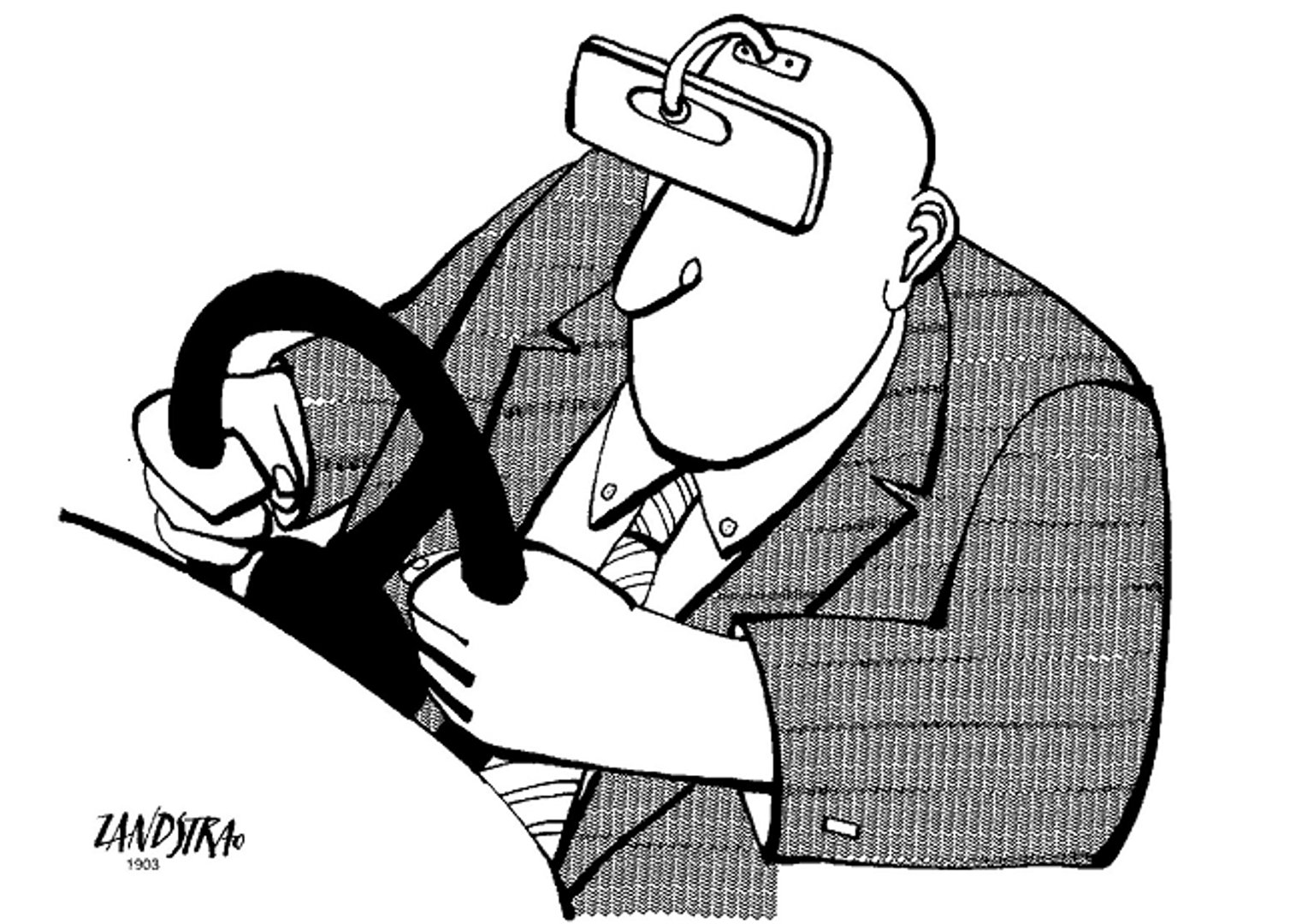
We have all heard that old chestnut “managing a company on the financials is like driving a car by looking out the rear-view mirror”. It’s actually worse than that… at least in your car’s rear-view mirror the data is changing in real time. With your financials it the image is frozen in time; they are not only outdated, they are still-pictures!
Wouldn’t it be useful if the measures we looked at were not only real-time, but also predictive of the future? Would it be better if their dashboard could be instantly transformed for each individual viewer? You would see your metrics – not those of the CEO. The CEO would see theirs – not some NPS or ROI stuff intended for someone else.
Wouldn’t it be really cool if the data was UP TO DATE! The meeting might have been called a week ago, but a lot has happened since then. Maybe we should be looking at today’s data in today’s meeting, not a PowerPoint that was created a week ago when the meeting was called! (Who would have thought, right?)
Using new measures allows us to deal with multiple stakeholders and various levels of complexity, including our own employees. The question is how to do this without creating different slide decks for each stakeholder as we may do now? The answer… Using different views in your RTS dashboard. With your data flowing in real time and the ability to customize whatever view you want your audience to see, it makes using a slide deck feel like driving through the rear view mirror (old/out-of-date data), but you can only look at still photos (not dynamic).
About the RTS Dashboard
Don’t feel like you’re being left in the dust already – the RTS dashboard could not be created until now. We didn’t have the data, the dashboards, or the devices to make them always available.
The foundation of the RTS dashboard is:
- the real-time data
- strategic context
- your way, always available
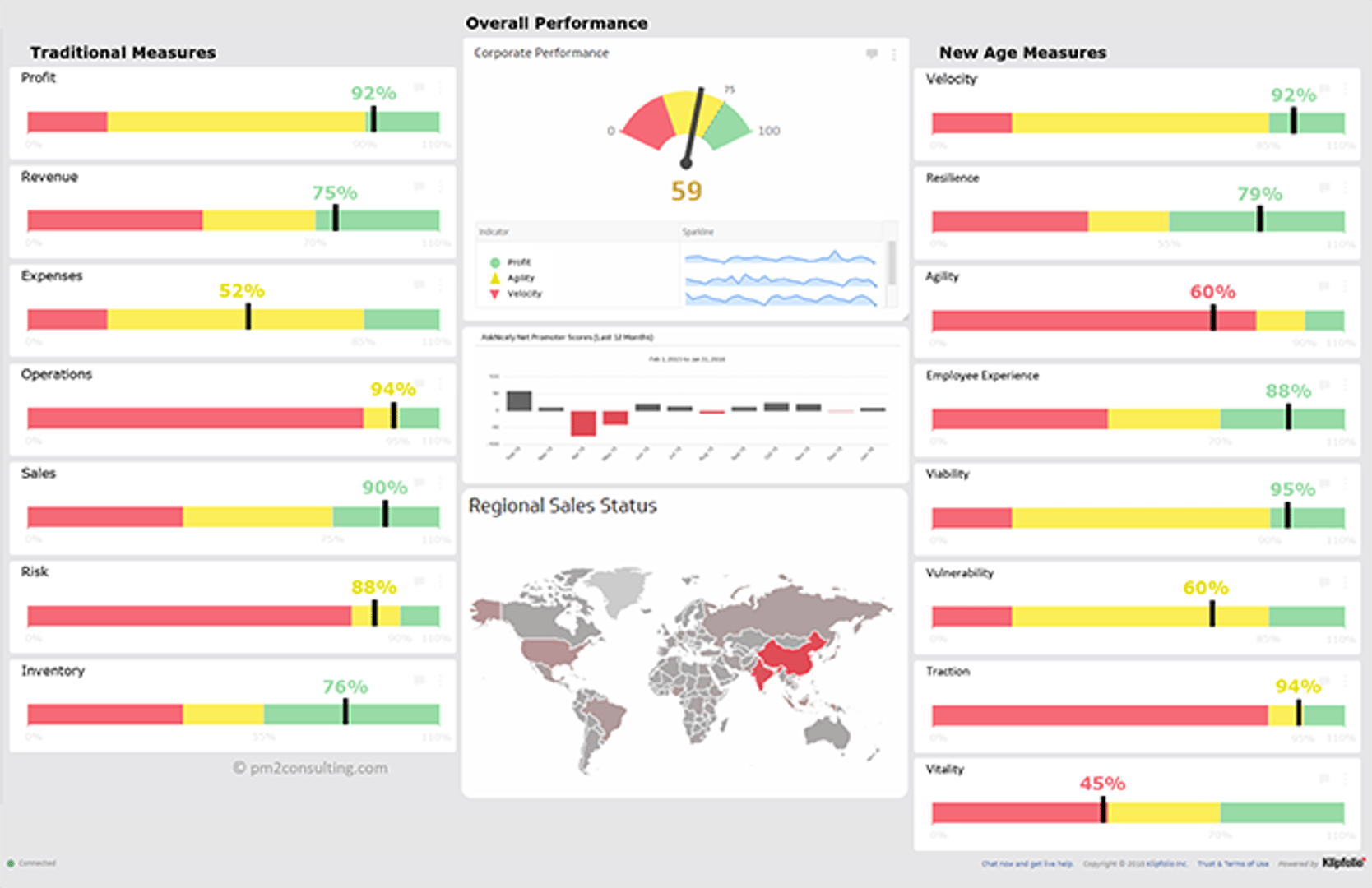
We have identified 15 universal measurement families. This makes implementation easy, it is virtually an off the shelf solution to empower your business based on a simple diagnostic. RTS Dashboards vary by function, business and maturity. DevOps team would measure their Velocity based on “deployment frequency” and “change lead time”, but this doesn’t really fit for Human Resources.
Although there are many overlaps, in our client work we’ve identified around 20 modifications to accommodate different functions/businesses/maturity levels. To help solve the confusion of where you may fit best, we’ve developed a structured diagnostic to determine which measures you need.
Benefits of the RTS dashboard
As you can imagine are plenty of benefits to the RTS dashboard. Here’s a concise list of the ones we’ve been told by our clients.
- Agility – With live data and different views for your organization, everyone can be prepared for internal or external change, and quickly adapt.
- Alignment – Everyone is now seeing the same data, and it can be clearly communicated by leadership. We no longer have 20 different slide decks telling different stories on the information – if that information reaches your employees at all.
- Predictability – Make real-time strategic decisions when your data is flowing in real-time. Better predictions can be made, and faster since we are now working with this minute’s data, not last month’s.
- Wide Ownership – With everyone signed onto this tool, meetings just became WAY easier. No one will want to go back to the days of PowerPoint.
- OKRs – What are the biggest challenges in creating objectives and key results for an organization? Data: Check. Everyone on the same tool: Check. Showing how you contribute to the company’s strategy: Check.
- Rewards – You don’t need to guess at what your employees are doing anymore, there’s live data on their performance waiting for you to use it!
What to do now?
First off – you’ve got to decide that driving through the rear-view mirror is not good enough. Take the diagnostic and see what your company should really be measuring, then just do it. Find the measures, build your dashboards, begin learning, and start making it better.
About Pm2
Brett is an Executive Partner at Pm2 (Performance Measurement & Management) an international consulting firm specializing in the development and implementation of strategic dashboards and scorecards. The frameworks they use includes OKRs (Objective and Key Results), Balanced Scorecard, 4DX (Four Disciplines of Execution) Lean, Six-Sigma, etc. Their work has been profiled in Harvard Business Review, Fortune and Forbes magazines as well as countless business books and periodicals. We are pleased to have this thought leader as an active contributor to our blog posts.
Related Articles
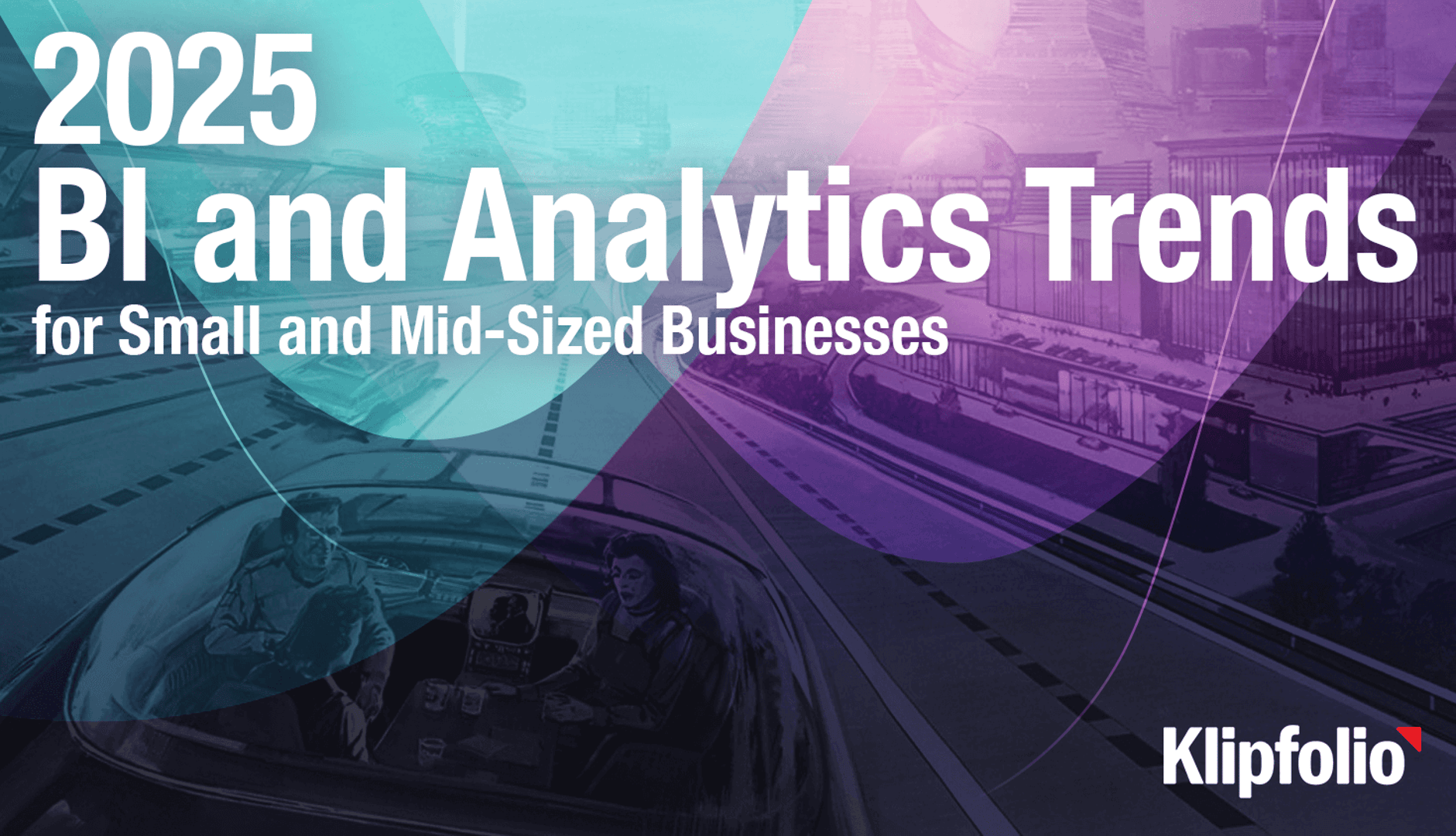
2025 BI and Analytics Trends for Small and Mid-Sized Businesses
By Allan Wille, Co-Founder — December 18th, 2024
Promoting data literacy with metrichq.org and the power of AI
By Allan Wille, Co-Founder — October 12th, 2023
Secure and accessible dashboards for your extended team
By David Mennie — April 25th, 2023

